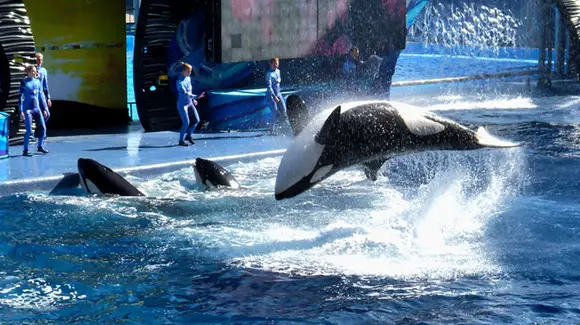Florida Alligators
By James | Last updated August 18, 2023
This page may contain compensated affiliate links. Please read the Disclaimer for more information
The range of the American Alligator (alligator mississippiensis) stretches from the south eastern regions of North Carolina, South Carolina, Georgia, all of Florida, the southern parts of Alabama, Mississippi, Louisiana, Texas and up into the very southern tip of Oklahoma.
Their preferred habitat is fresh water lakes and slow moving rivers or canals but they can also be found in more brackish water and coastal marshes.
There are thought to be between 1 and 2 million alligators living in Florida today and the population is controlled by the licenced hunting and harvesting of both alligators and their eggs
In 2006, the Florida Fish and Wildlife Conservation Commission sold a total of 4,406 permits to 2,155 hunters. The hunting season runs from August 15 to November 1 and each permit allows two alligator kills.
Because more and more waterfront properties are being built in Florida these days, humans are forever encroaching on the alligators natural habitat and competing for space. Read more about how to live alongside alligators.
During the 1800s and right up until the 1970s, alligators provided a major boost to the economy from hunting for their meat and hides but in 1977 the Florida alligator was placed on the endangered list.
When numbers started to recover, rather than being de-listed, its status was down-graded to ‘threatened’ partly because of its similarity to the American crocodile (crocodylus acutus). Today an alligator can only be killed by someone with the appropriate permit and licence.
The alligator mating season starts in early April and mating takes place during May and June. The female lays on average around 35 eggs in a mound shaped nest made from soil, debris and vegetation.
After approximately 60 to 65 days the eggs hatch (late August to early September). It is estimated that only half the eggs actually hatch and at the end of the first year only 6 youngsters will have survived. By the time an alligator reaches maturity at six feet in length, only 4 are expected to have survived and where the population is high, this number will be lower as they are known for their cannibalism when competing for territory and food.
Young alligators feed on insects, small fish and amphibians but once they become adults they will eat fish, turtles, snakes, small mammals, birds and other alligators.
Female alligators grow to about 9 feet long but males can grow a lot bigger; the record being 14 foot and 5/8 inches for Florida and as much as 1,000 pounds in weight.
Alligators are ectothermic which means they need external heat to regulate their body temperature. During the winter months, they are pretty dormant and only feed when the ambient temperature is above 70° F (21° C). They are most active when the temperature is between 82° and 92° F (28° to 33° C).
If you want to see an alligator, they can be found in the wild in all 67 Florida counties but bear in mind the temperature depending on the time of year and time of day for the best chances of catching sight of them. You can also see them in captivity at places like Gatorland, SeaWorld and Homosassa Springs.
See also:- Living alongside Florida alligators
Florida Theme Parks
Theme Park Ticket Guides
Popular Articles







![Beauty and the Beast topiary at Disney Epcot [© 2019, floridareview.co.uk, all rights reserved]](https://floridareview.co.uk/wp-content/uploads/2018/10/beauty-beast-topiary.jpg)







